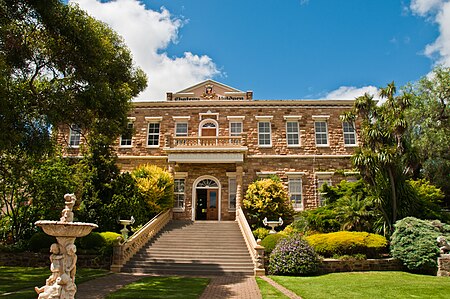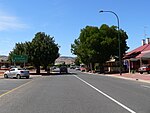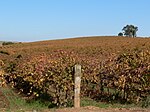The Barossa Valley wine region is one of Australia's oldest and most premier wine regions. Located in South Australia, the Barossa Valley is about 56 km (35 miles) northeast of the city of Adelaide. Unlike most of Australia whose wine industry was heavily influenced by the British, the wine industry of the Barossa Valley was founded by German settlers fleeing persecution from the Prussian province of Silesia (in what is now Poland). The warm continental climate of the region promoted the production of very ripe grapes that was the linchpin of the early Australian fortified wine industry. As the modern Australian wine industry shifted towards red table wines (particularly those made by the prestigious Cabernet Sauvignon) in the mid-20th century, the Barossa Valley fell out of favor due to its reputation for being largely a Syrah from producers whose grapes were destined for blending. During this period the name "Barossa Valley" rarely appeared on wine labels. In the 1980s, the emergence of several boutique families specializing in old vine Shiraz wines began to capture international attention for the distinctive style of Barossa Shiraz, a full bodied red wine with rich chocolate and spice notes. This led to a renaissance in the Barossa Valley which catapulted the region to the forefront of the Australian wine industry.Many of Australia's largest and most notable wineries are either headquartered or own extensive holdings in the Barossa Valley. These include such wineries as Penfolds, Peter Lehmann, Orlando Wines, Seppeltsfield, Wolf Blass and Yalumba. Many Shiraz vines in the Barossa Valley are several decades old, with some vineyards planted with old vines that are 100–150 years old including Turkey Flat in Tanunda that is home to the oldest commercially producing grape vines, originally planted in 1847. Other grape varieties grown in the Barossa Valley include Grenache, Mourvedre, Cabernet Sauvignon, Riesling, Chardonnay and Semillon.In February 2011, South Australian Premier Mike Rann announced that special legislation would be introduced to protect the unique heritage of the Barossa Valley and McLaren Vale. Premier Rann said: "Barossa and McLaren Vale food and wine are key icons of South Australia. We must never allow the Barossa or McLaren Vale to become suburbs of Adelaide." The Character Preservation (Barossa Valley) Act 2012 was subsequently passed by the South Australian Parliament.








